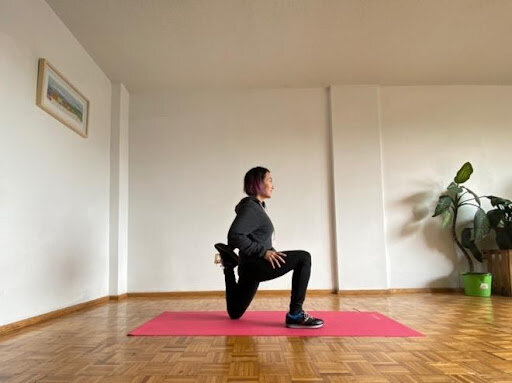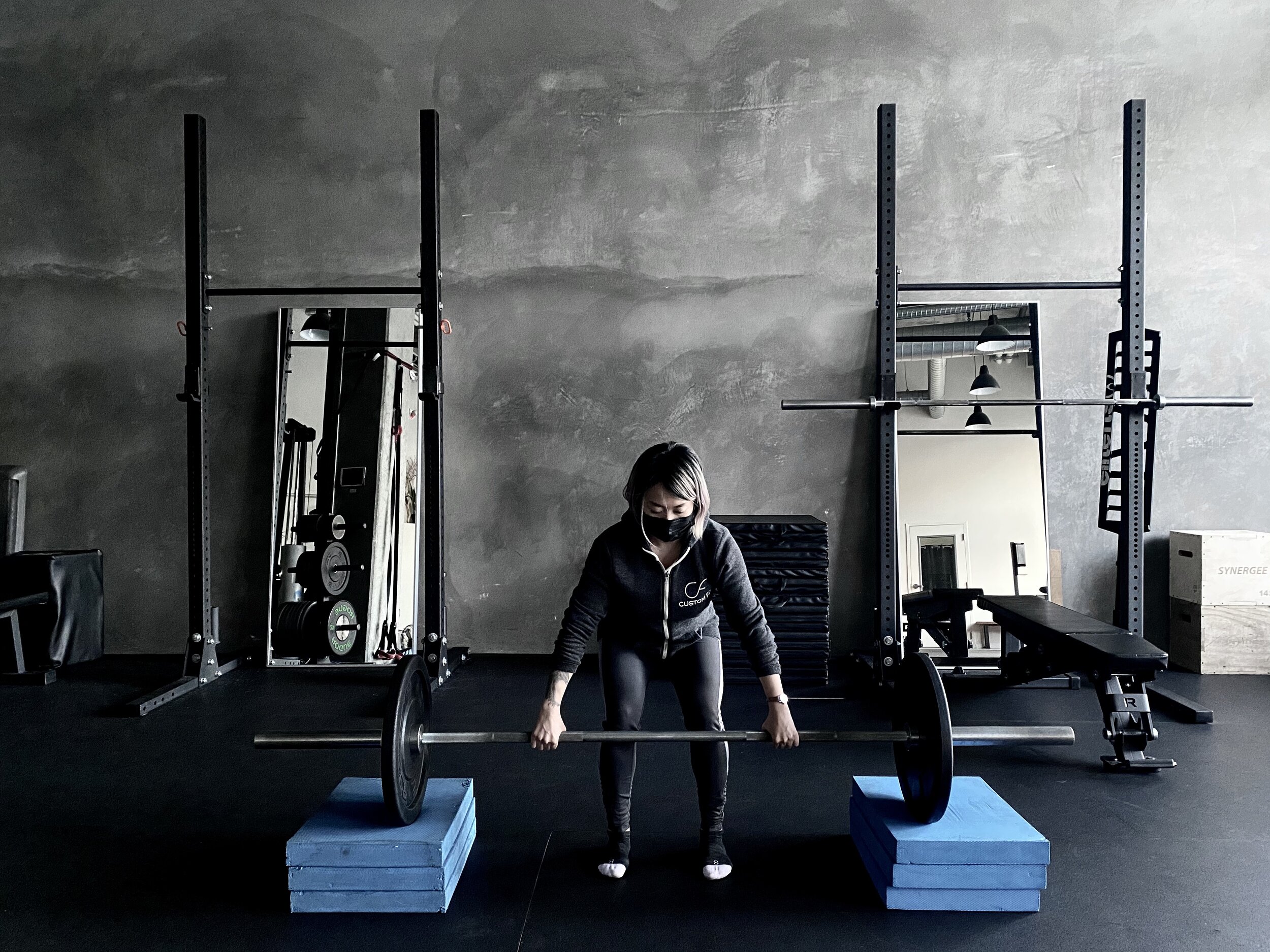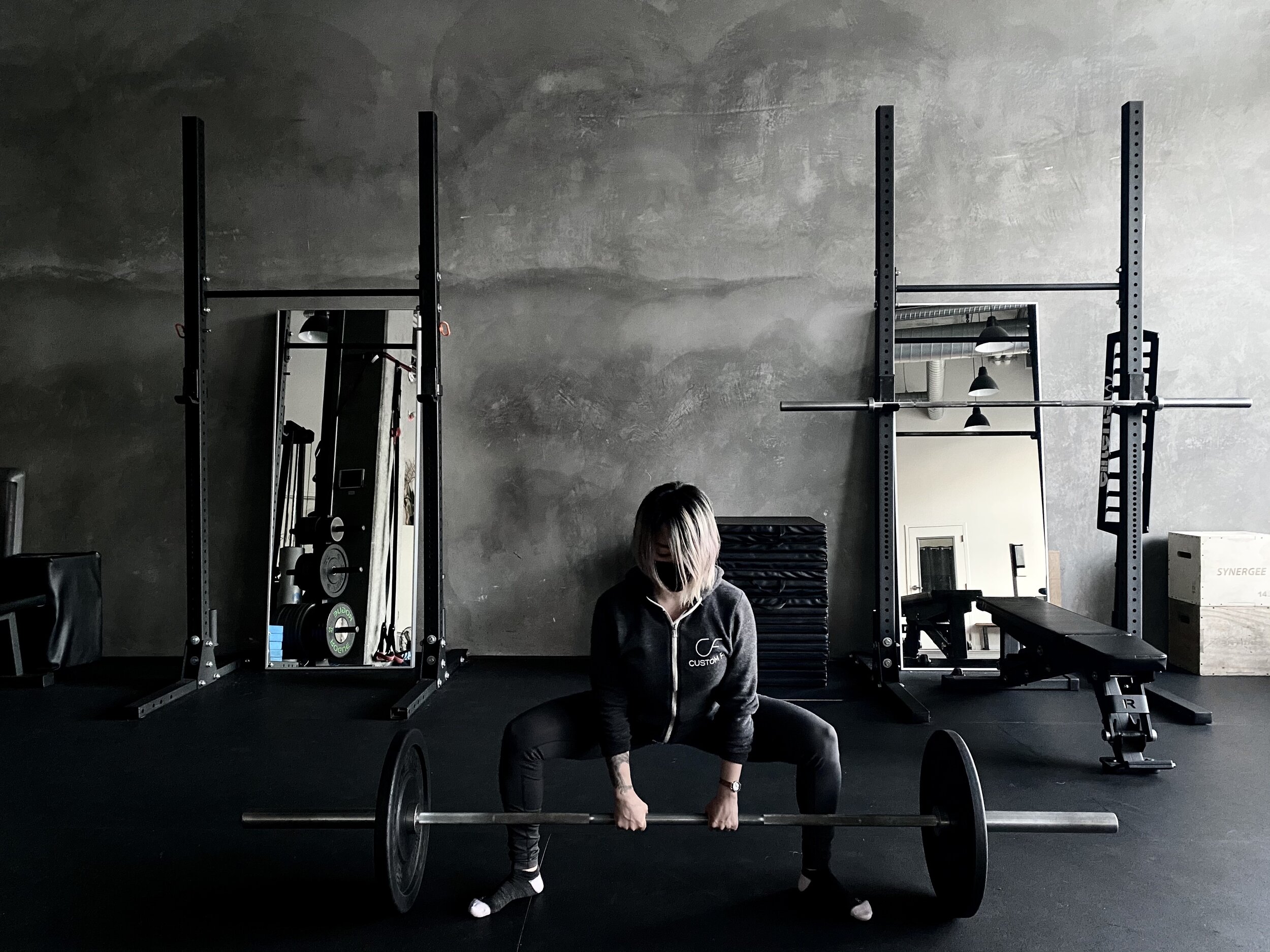Written by: Christina Lim, NASM-CPT,CES @tinaroni
As the surge of the Delta variant in the US compels us into mask-wearing etiquette once again, many of us are carrying our vaccination cards to enter public indoor spaces, keeping an eye on the Delta Plus variant (46 cases have been reported in Santa Clara county as of August 7th), and some of us are feeling hopeful even as return-to-office dates are delayed and we continue to work from home - all while continuing our daily activities with extra care. We may be feeling reassured by lower numbers of COVID cases among the vaccinated (about 60% of the US population is now fully vaccinated, including 78% in the San Francisco Bay Area), but we’re also seeing an alarming 7-day average of 129,000 new cases per day as of August 14th, a number that has risen everyday since July 5th (as reported by John Hopkins University), more breakthrough cases (COVID-positive cases among the vaccinated), and epidemiologist Larry Brilliant was recently quoted saying that America is ‘closer to the beginning’ of the pandemic than the end. In case this wasn’t enough bad news, the San Francisco Chronicle just reported that the West coast’s wildfires could be responsible for thousands of COVID-19 cases.
If you’re feeling anxiety, burnout, exhaustion, or despair from the unrelenting, so-called “pandoomerang” reality of the COVID-19 virus, you are not alone - according to a recent Harris poll, more than half of vaccinated Americans are “extremely concerned” about the Delta variant. In addition to acknowledging your feelings of stress, practicing deep breathing, halting consumption of too much social media and news, perhaps considering taking time off for mental health, the team here at Custom Fit SF hopes that you will continue your daily self-care, including regular exercise, eating nourishing, immune-boosting foods, and mentally staying balanced with a gratitude practice, meditation, or yoga. (If you feel you or a loved one is in crisis, you may want to keep the NAMI hotline on hand).
In addition to frequent breaks, adequate sleep, participating in enjoyable activities, and connecting regularly with loved ones, we suggest a regular decompression session of stretching to assist with tension release, stiffness, or muscular tightness, which can result from prolonged periods of sitting, limited movement, and chronic stress. This week’s post will cover a few recommendations on exercises and stretches for the back, hips, and legs. If you are having low back discomfort or leg cramps, you may benefit from these stretches as well. Note: Do not push in stretches to a point of pain, and do not bounce while in a stretch position. If you have an injury or chronic pain in these areas, consult a doctor or physiotherapist first.
(1) Half-kneeling hip flexor stretch
This stretch can effectively help us to counteract prolonged hip flexion (like a seated position). Kneel on a mat with both knees, then bring one leg in front with a larger than 90-degree bend in the front knee. Maintaining an upright torso, lean forward until you feel a stretch in the front of the hip of the back leg. For a deeper stretch, squeeze the glute muscle of the back leg. Hold for 20 seconds, with deep breaths. You can time your exhale breaths with further deepening into the stretch.
Add a TFL stretch: To target the tensor fasciae latae (TFL for short, it’s the small muscle on the outside of the hip connected to your IT band) in this stretch, raise the arm on the same side as the back leg while in this half-kneeling position and reach sideways over your head to the opposite side of the body.
Add a quad stretch: To target the top-of-thigh muscle a bit closer to the knee, gently grab the ankle of the back leg and bring it up to your glute. If you’re not feeling a stretch, lean forward more with the torso as you do this to target more of the quad.
(2) Deep squat or Malasana (“Garland pose”)
This pose is traditionally used in India to prepare for long periods of seated meditation, as it assists with blood circulation in the pelvic region. It is a hip and groin opener that can also help relieve low back discomfort and assist in maintaining good ankle mobility.
Come into a squat position with feet planted about hip distance apart, toes slightly turned out, and thighs apart - wider than your torso. Bring your upper arms inside your knees. Pressing your elbows into your knees, bring your palms together into a prayer-like position. Reach with your hands towards your heart center until your forearms get close to parallel with the floor. Keep the shoulders relaxed and lengthen the torso, keeping your spine straight. Hold for 20 seconds, taking deep, relaxed breaths.
Optional regression: If a flat-footed squat is too difficult, try placing a rolled yoga mat or blanket under your heels.
(3) Seated saddle stretch
Start in a seated position with legs apart approximately 90 degrees, with toes up towards the ceiling, and maintain an upright torso, with your head aligned with your spine. Slowly bend forward at the hips, reaching with your hands, while striving to maintain a flat back (bend at the hips, not at the low back). You should feel a stretch in your inner thighs, hamstrings, calves, and in your back. Hold for 20 seconds, with deep, relaxed breaths.
(4) Shin box
This is a great hip mobility exercise that gets us moving in internal and external rotation at the hip capsule, lengthening the hip flexors, lubricating the hip and knee joints, and activates the glutes (if you’re consistently seated or driving a lot, your glutes may become deactivated, weak, or have difficulty turning on when they’re needed, which can increase the chance of injury.)
In a seated position, have one leg in internal rotation at the hip, and one leg in external rotation, separated slightly, with both knees at a 90-degree bend.
While activating your glutes, lift at the knees to swing over into the alternate position, and practice flowing back and forth for 10-20 reps (on each side). Lean back onto your hands if you need assistance, and try to eventually progress to doing this without your hands.
(5) Extended puppy pose
This pose elongates the spine and abdominals, opens up the shoulders and chest, stretches the upper arms, and releases neck tension. Start in a tabletop position, with hips aligned above the knees, and shoulders aligned above the wrists. Have the tops of the feet rest on the floor, with the toes pointed straight behind you. Slowly walk the hands forward, allowing the chest, and then the forehead, to sink to the floor, while reaching with the hips upwards and behind you. Hold for 20 seconds, taking deep breaths, sinking deeper into the floor while elongating the spine with each exhale.
(6) Seated spinal twist
This is a great way to stretch the glutes and back. In a seated position, place the sole of your left foot on the floor just outside of your right thigh and twist to your left, placing your right elbow against the outside of your left thigh, and reaching behind you with your left hand and planting it on the floor. Place pressure on your left thigh with your right elbow as you focus on lengthening the spine upwards and rotating your chest open. Hold for 20 seconds, taking deep breaths, then switch to the other side.
(7) Alternating knee hugs
Knee hugs alleviate low back pressure and lengthen the spine. While lying on your back, alternate knee hugs, one at a time, holding each knee for 2-3 breaths, pulling the knee in a tiny bit more on each exhale. Alternate left and right, completing 8-10 knee hugs for each side.
In addition to performing these stretches and exercises throughout the day when taking breaks, these are all great additions to a warm-up prior to weightlifting or an aerobic exercise such as running or cycling, as well as for cool-down post-workout.
As we cope with not only the physical stresses on the body but also the mental stress, it is important to note the mind-body connection. When we are stressed, we innately configure our body for a fight, flight, or freeze response. This means we position the body to be prepared for defensive movements like kicking and punching, running away, or withdrawing into a fetal position, all of which require the hips to become tightened, bringing the knees in close to our body. This is similar to clenching your jaw or tightening your fist when angry. In addition, if a seated position (hips flexed), for example, is held for long periods of time, emotions of stress that are felt during this time may become stored in the hips. It’s important to note that even if we are in an otherwise calm and peaceful mental state, by closing the hips and chest (as in the fetal position), we signal to the body that there may be danger or a looming threat. Opening the hips not only allows the release of stress and negative emotions, but it also signals to the body that all is well. During hip opening stretches, if there is a purge of emotions, it will help to maintain an attitude of acceptance and staying in the present moment so that the discomfort may pass.
As you may have noticed, some people are coping with this pandemic lifestyle better than others. As Anna North from Vox writes, as we see folks around us in high stress, “we can all do something for one another: have a level of understanding and empathy for the ways that many of us are, nearly a year and a half into the pandemic, very much struggling,” and we couldn’t agree more. Having compassion for those in our community as we pass each other in the grocery store, get our workouts in at the gym, and hike the parks around us can help us to collectively stay hopeful, positive, and supportive of each other through this challenging time. We are always stronger together.
If you’d like more guidance on exercise and stretches that are best for you, or if you are interested in a customized meal plan, fill out our contact form and the team at Custom Fit SF will set you up with a personal trainer, coach, registered dietician, or nutritionist to best meet your needs.
About Custom Fit SF
Custom Fit SF is San Francisco’s premier personal training facility, with two studios totaling approximately 4,000 square feet. We’re located at 1844 Market Street. We have complimentary towels, a shower, lockers, air conditioning, great music, easy Muni access, street parking, and an incredible amount of natural light. Our staff is fully vaccinated, and we maintain stringent COVID-19 cleaning protocols for everyone’s safety. We’ve got an arsenal of specialized equipment ready for your personalized program. Come check us out! Fill out the intake form here.
*Disclaimer: Not all exercises, stretches, self-massage techniques, tips, or maneuvers mentioned here are suitable for everyone. Before attempting anything new, take into account your flexibility, strength, and overall health to determine whether or not a particular recommendation is appropriate for you. If you are not able to determine the safety of a recommendation, do not do it without having cleared it first with your physician. This is particularly important if you are overweight, pregnant, nursing, taking regular medications, have injuries, have had a recent surgery, or have any existing medical or health conditions. The exercises and instructions included on this website are not a substitute for medical advice. As with any exercise program, if at any point during your exercise you begin to feel faint, dizzy, or have physical discomfort, you should stop immediately. You are responsible for exercising within your limits and seeking medical advice and attention as appropriate. Any injury sustained from proper or improper use of the exercises contained herein is solely the responsibility of the participating individual. Custom Fit SF, its trainers, coaches, staff, partners, and affiliates are not responsible for any injuries that result from participation in the recommendations shown.
































